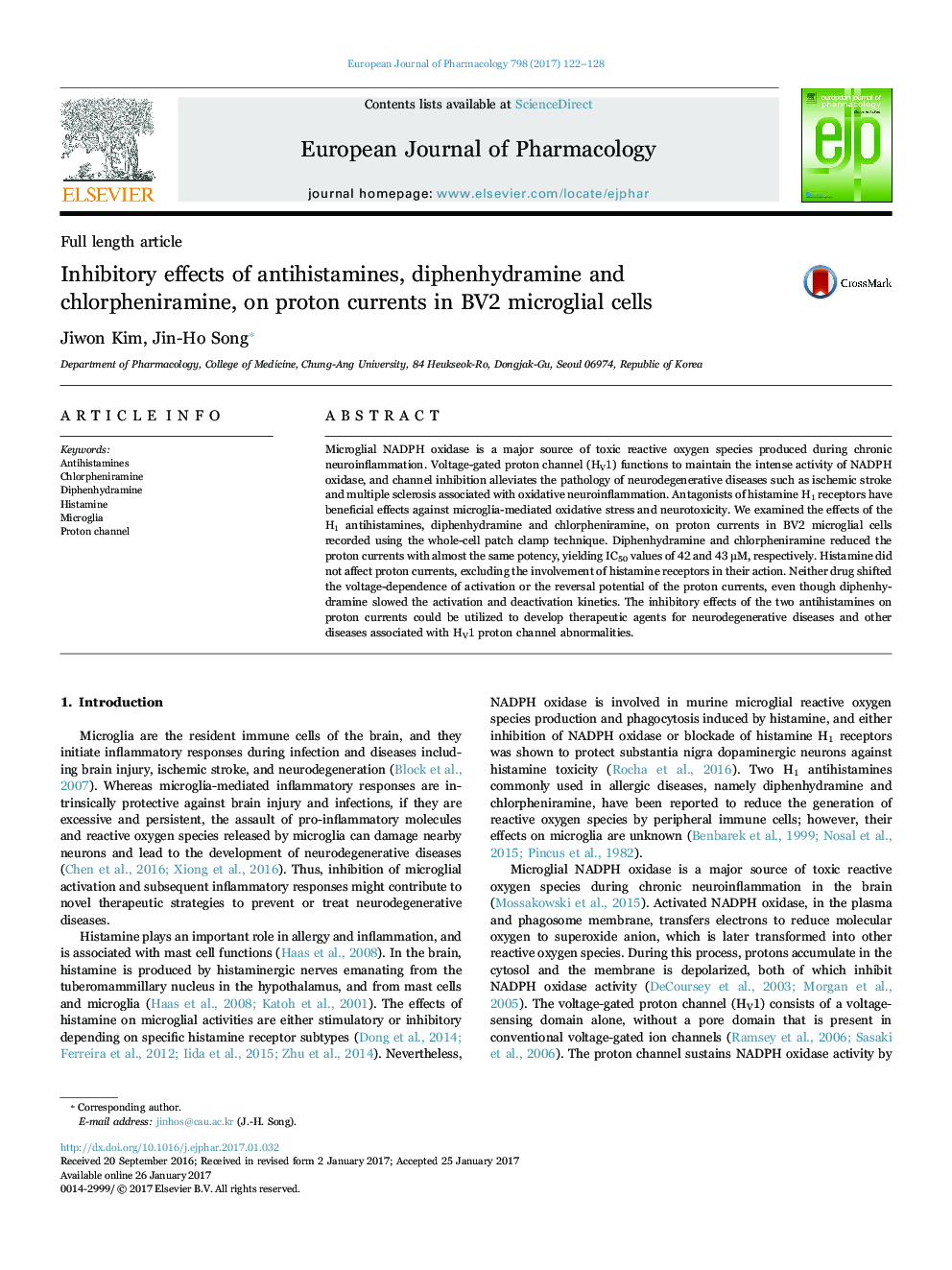| کد مقاله | کد نشریه | سال انتشار | مقاله انگلیسی | نسخه تمام متن |
|---|---|---|---|---|
| 5554783 | 1558882 | 2017 | 7 صفحه PDF | دانلود رایگان |

Microglial NADPH oxidase is a major source of toxic reactive oxygen species produced during chronic neuroinflammation. Voltage-gated proton channel (HV1) functions to maintain the intense activity of NADPH oxidase, and channel inhibition alleviates the pathology of neurodegenerative diseases such as ischemic stroke and multiple sclerosis associated with oxidative neuroinflammation. Antagonists of histamine H1 receptors have beneficial effects against microglia-mediated oxidative stress and neurotoxicity. We examined the effects of the H1 antihistamines, diphenhydramine and chlorpheniramine, on proton currents in BV2 microglial cells recorded using the whole-cell patch clamp technique. Diphenhydramine and chlorpheniramine reduced the proton currents with almost the same potency, yielding IC50 values of 42 and 43 μM, respectively. Histamine did not affect proton currents, excluding the involvement of histamine receptors in their action. Neither drug shifted the voltage-dependence of activation or the reversal potential of the proton currents, even though diphenhydramine slowed the activation and deactivation kinetics. The inhibitory effects of the two antihistamines on proton currents could be utilized to develop therapeutic agents for neurodegenerative diseases and other diseases associated with HV1 proton channel abnormalities.
Journal: European Journal of Pharmacology - Volume 798, 5 March 2017, Pages 122-128